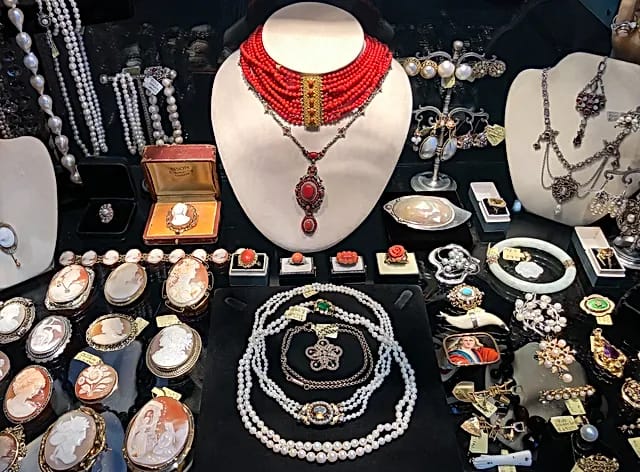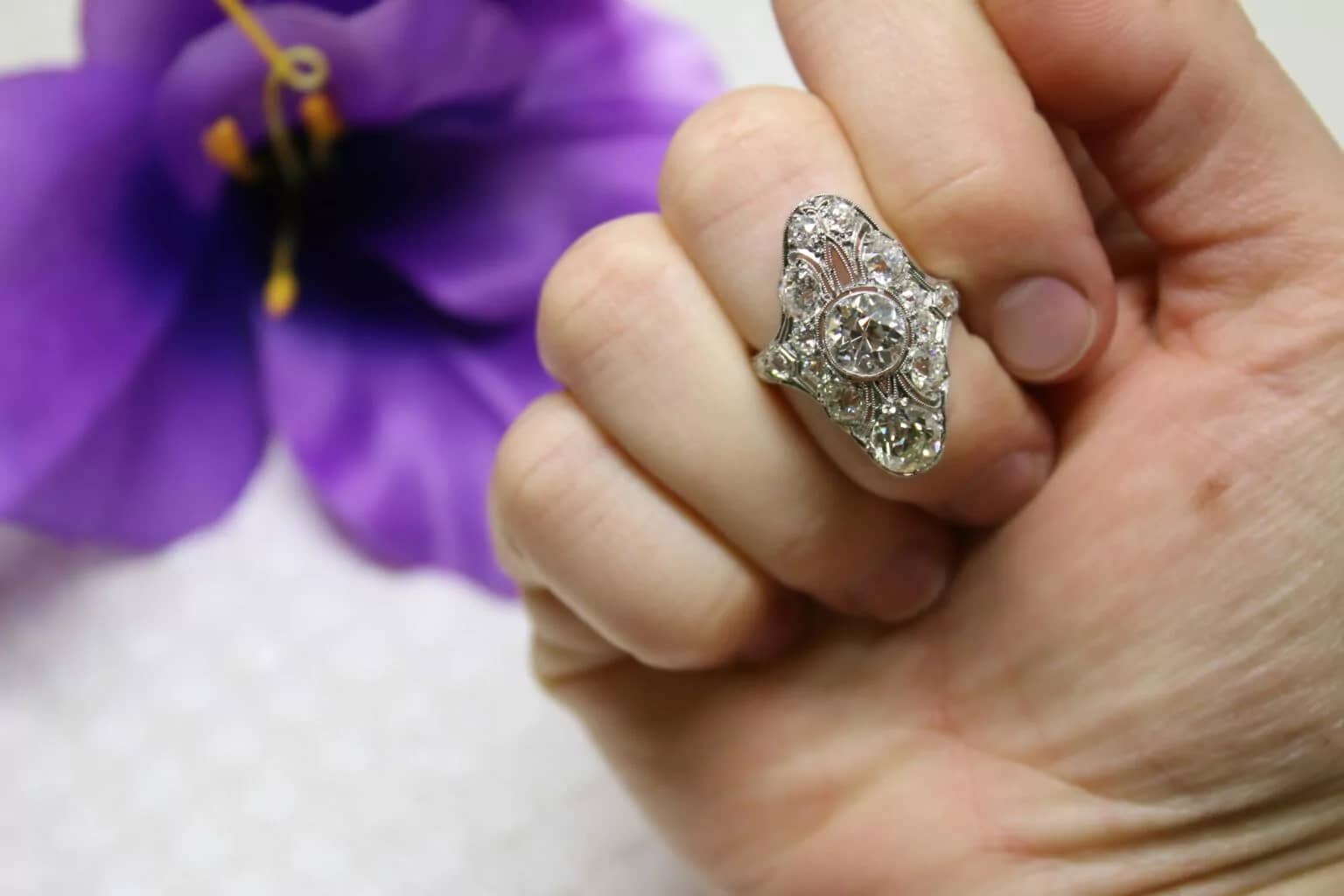Antique jewelry is often a source of mystery and intrigue, leaving many wondering about its history and value. Are you curious about the secrets of antique jewelry? Have you ever wanted to learn more about the stories behind the pieces? This article will help you uncover the mysteries of antique jewelry, providing you with the information you need to make informed decisions.
1. History of Antique Jewelry
Antique jewelry has been around for centuries and has a rich history. The earliest known jewelry dates back to ancient Egypt and Mesopotamia, where it was worn by both men and women as a symbol of wealth and status. Jewelry during this time was made from gold, silver, and precious stones.
During the Renaissance period, jewelry became more intricate and detailed, with the use of pearls, diamonds, and other precious stones. It was during this time that jewelry was used to display one’s wealth and status, and it was often commissioned by royalty and the upper classes.
In the 19th century, jewelry became more accessible to the middle classes, and the Victorian era saw a rise in sentimental jewelry, such as lockets and mourning jewelry. Art Nouveau and Art Deco styles emerged in the early 20th century, with a focus on geometric shapes and the use of enamel and platinum.
Today, antique jewelry is highly sought after by collectors and enthusiasts. It is a unique and timeless way to express one’s personal style and appreciation for history and craftsmanship.

Sources:
– “A Brief History of Antique Jewelry” by The Spruce Crafts
– “The History of Antique Jewelry” by Lang Antiques
– “The History of Jewelry” by The Jewellery Editor
2. Identifying Antique Jewelry
Antique jewelry is a precious and unique item that has a rich history and story to tell. However, identifying antique jewelry can be a challenge, especially if you’re not familiar with the different styles and materials used during different periods. Here are some tips to help you identify antique jewelry:
1. Look for hallmarks or maker’s marks on the jewelry. These marks can help you determine its age and origin.
2. Examine the materials used in the jewelry. Different materials were popular during different periods. For example, Georgian jewelry often used diamonds, pearls, and gold, while Victorian jewelry incorporated more colored gemstones.
3. Consider the style and design of the jewelry. Different periods had distinct styles, such as Art Nouveau or Art Deco, that can help you date the piece.
4. Seek the help of a professional appraiser or jeweler. They can provide a more accurate assessment of the piece and its value.
Remember, identifying antique jewelry takes time, patience, and knowledge. By following these tips, you can gain a better understanding of the piece and its history.

3. Types of Antique Jewelry
Antique jewelry is a timeless classic and can be found in styles dating back centuries. To help you identify and appreciate the different types of antique jewelry, we’ve outlined three of the most popular below.
Victorian Jewelry – This type of jewelry was popular during the Victorian era (1837 – 1901). Characterized by intricate, ornate designs, this style was often crafted from precious metals such as gold and silver, and decorated with semi-precious stones. A guide to Victorian jewelry provides more information on this type of antique jewelry.

Art Nouveau Jewelry – Art Nouveau jewelry was popular between 1890 and 1910, and is recognizable for its use of organic shapes, such as flowers, leaves, and birds. This style is often crafted from gold or silver, and decorated with gemstones or enamel. To learn more about Art Nouveau jewelry, read this guide to Art Nouveau jewelry.

4. Caring for Antique Jewelry
Antique jewelry is a beautiful and valuable addition to any collection. However, it also requires special care and attention. Here are some tips for caring for your antique jewelry:
- Keep your antique jewelry away from direct sunlight and moisture. Both can cause damage to the metal or stones.
- Store your jewelry in a dry, dark, and dust-free area. A jewelry box or soft pouch is ideal for protecting your pieces.
- It is best to avoid wearing antique jewelry when showering or swimming. Soaps and other chemicals can cause discoloration.
- Clean your jewelry with a soft cloth and warm water. Avoid harsh cleaners and chemicals.
- If you need to repair your antique jewelry, take it to a professional jeweler. Do not attempt to fix it yourself.
These tips will help you keep your antique jewelry looking beautiful and lasting for years to come. It is also important to get your antique jewelry appraised to ensure it is properly insured.

5. Valuing Antique Jewelry
Antique jewelry is a valuable asset that can be passed down from generation to generation. When it comes to valuing antique jewelry, there are several factors to consider. The first thing to look at is the condition of the piece. Is it in good condition or does it have damage or wear and tear? The second thing to consider is the rarity of the piece. Is it a one-of-a-kind design or is it a common style? The third thing to consider is the age of the piece. The older the piece, the more valuable it may be.
To get an accurate valuation of your antique jewelry, it is best to consult with an expert appraiser. They will be able to assess the piece and provide you with a detailed report on its value. It is also a good idea to research similar pieces that have sold in the past to get an idea of the current market value.
If you are looking to sell your antique jewelry, it is important to find a reputable dealer who specializes in antique jewelry. They will be able to provide you with a fair price for your piece.
For more information on valuing antique jewelry, check out the National Association of Jewelry Appraisers website.

6. Popular Designers & Makers of Antique Jewelry
Antique jewelry is a fascinating topic that has piqued the interest of many people. If you’re a fan of antique jewelry, you’ve probably heard of some of the most popular designers and makers. Here are six of the most well-known names in the world of antique jewelry:
1. Cartier – A French luxury goods company that has been creating jewelry since the 19th century. Their Art Deco pieces are highly sought after.
2. Tiffany & Co. – An American luxury jewelry and specialty retailer that has been around since the 19th century. Their Art Nouveau and Edwardian pieces are particularly popular.
3. Fabergé – A Russian jewelry firm known for their intricate and ornate designs. Their famous Fabergé eggs are some of the most valuable pieces of jewelry in the world.
4. Van Cleef & Arpels – A French jewelry company that has been around since the early 20th century. Their use of precious stones and vibrant colors make their pieces stand out.
5. Boucheron – A French jewelry company that has been creating stunning pieces since the mid-19th century. Their use of animal motifs and bold designs make their pieces instantly recognizable.
6. Lalique – A French glassware and jewelry company known for their Art Nouveau designs. Their use of glass and enamel in their jewelry pieces is unparalleled.
By reading this article, we hope you have learned about the rich history of antique jewelry, from its origins in ancient Egypt and Mesopotamia to its evolution through the Renaissance, Victorian era, and beyond. You should now be equipped with the knowledge to identify antique jewelry by examining hallmarks, materials, style, and design. Additionally, you should understand how to care for and value antique jewelry, as well as recognize the popular designers
Conclusion:
Antique jewelry, with its rich history and intricate designs, has always been a subject of fascination and admiration. Originating from ancient civilizations like Egypt and Mesopotamia, these timeless pieces have evolved through various eras, including the Renaissance, Victorian, Art Nouveau, and Art Deco periods. The allure of antique jewelry lies not just in its beauty but also in the stories it holds. Identifying genuine antique pieces requires a keen eye for hallmarks, materials, and distinct styles from different periods.
Proper care, such as protection from sunlight and moisture, is essential to maintain their pristine condition. The value of antique jewelry is determined by factors like condition, rarity, and age. Renowned designers and makers, including Cartier, Tiffany & Co., and Fabergé, have left indelible marks in the world of antique jewelry. For enthusiasts and collectors, these pieces are not just adornments but are also symbols of history, craftsmanship, and timeless elegance.
